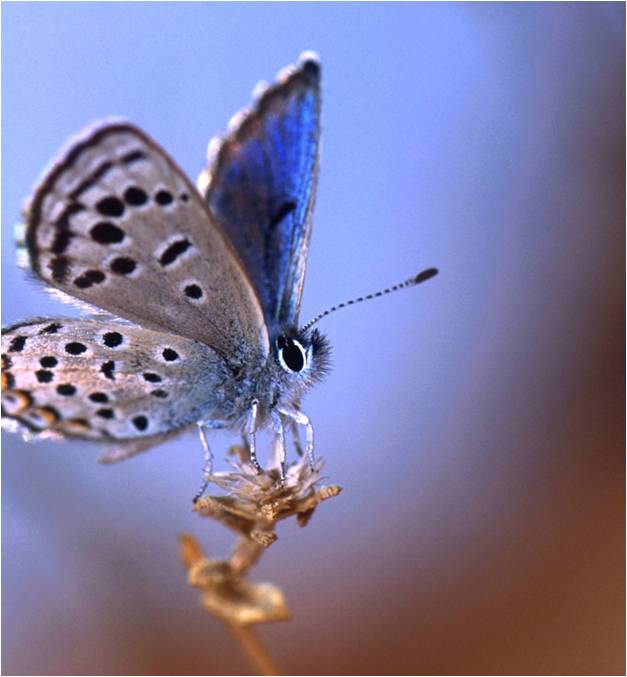| The smallest butterfly in the world: the Sinai Baton Blue | Back : Forward |
 The Sinai Baton Blue (Photo: Mike James) The Sinai Baton Blue (Photo: Mike James)
The advent of an internationally-managed Protectorate in St Katherine in 1996 ushered in formal conservation, especially with the first-ever study of one of the only two animals (both butterflies) endemic to Egypt, the Sinai Baton Blue butterfly Pseudophilotes sinaicus. This, the smallest butterfly in the world, is endemic to an area smaller than 7 kmē around the town of St Katherine at the heart of the Protectorate. It feeds only on the near-endemic Sinai Thyme Thymus decussatus, which occurs in a number of discrete patches on the mountaintops. Mike James (PhD 2001-4) found that some individuals of this highly sedentary butterfly can migrate among nearby patches, and patches are linked into a metapopulation. More recent work suggests a 3-year cycle to butterfly populations, with substantial phenological asynchrony among patches in both plant and butterfly. Our work led to the butterfly becoming the flagship conservation target for the Protectorate, featuring on an Egyptian stamp, children's books and video, a TV programme shown on Al-Jazheera and (allegedly) a forthcoming 2-LE coin. Threats to the butterfly were identified as overgrazing by bedouin livestock, overcollection of thyme for medicine, and the more long-term problem of climate change with its predicted hotter and drier conditions. The Protectorate responded to these by instituting fenced exclosures and a grazing ban in one of the butterfly's strongholds, supported by a bedouin helf, the tribal declaration of a no-grazing area under traditional law. Although we previously believed overgrazing to be a threat to this plant, we no longer think this is the case; rather, it looks as if the reverse is true, and the plant needs grazing to keep it from ageing. Mike James mapped the distribution of host-plant patches and the occurrence on them of butterfly populations, and measured rates of movement among patches, female oviposition behaviour, larval survival, and the role of ants in butterfly survival and distribution. His work has been followed up by Amy Shepherd (MRes 2009-10, on ants) and Katy Thompson (PhD 2009-12, on population synchrony). 2010-11 were years with heavy rains, a fascinating insight into the long-term strategy of both plant and insect. Many new patches of thyme have been discovered, and Haitham Zalat (MRes 2012-13) worked on the genetics and regeneration ecology of the plant. We extended this work to study the only other animal endemic to Egypt, another butterfly, the Sinai Hairstreak (Satyrium jebelia), via the MRes work of Andrew Power (2012-13). Selected publications:
|